
Digital Marketing Blogs
"Let's Learn, Explore, and Connect to the World"

Facebook Messenger Marketing: Connection with Customers Directly and Offering Personalized Communication
- Jenelie Hijosa
- Digital Marketing (Digital Business)

Introduction
 The arena of digital marketing has completely changed over the last few years. This is because new technologies keep coming out and people’s habits on the internet keep evolving. Initially, digital marketing strategies were predominantly focused on email blasts and banner ads, which were broad in their approach and often missed the mark regarding personal connection and engagement. As the internet became more interactive and social media platforms emerged, marketers quickly recognized the potential of these new channels to connect more directly and meaningfully with audiences.
The arena of digital marketing has completely changed over the last few years. This is because new technologies keep coming out and people’s habits on the internet keep evolving. Initially, digital marketing strategies were predominantly focused on email blasts and banner ads, which were broad in their approach and often missed the mark regarding personal connection and engagement. As the internet became more interactive and social media platforms emerged, marketers quickly recognized the potential of these new channels to connect more directly and meaningfully with audiences.
Facebook is offering businesses a wide array of tools to reach and engage with their target audience. However, it’s not just Facebook’s traditional news feed ads that have captured the attention of marketers. Facebook Messenger, launched in 2011, has evolved into a powerful marketing tool in its own right. With over 1.3 billion active users monthly, Messenger offers a unique conduit for businesses to host direct, personalized, and real-time conversations with customers, unlike any other platform.
This shift towards more direct and personalized communication via Facebook Messenger marks a pivotal development in digital marketing strategies. Businesses can now connect to their audience not just in a public or semi-public setting like a Facebook wall or comment section, but in the intimate and personal space of a Messenger chat. This capability to connect one-on-one has opened new avenues for customer service, sales, and overall engagement. In this way, Messenger is not just another marketing channel but a critical tool in the modern marketer’s arsenal, allowing for the delivery of messages crafted to connect with people on a more personal level,this emphasizes the emotional connection aspect and thereby driving higher engagement and conversion rates.
 The importance of Facebook Messenger in today’s marketing landscape cannot be overstated. As consumers increasingly expect instant and personalized interactions, Messenger’s role continues to grow as a necessary and dynamic platform for effective digital marketing. This blog will explore how businesses can get the most out of Facebook Messenger not just to communicate but to connect and convert, transforming everyday interactions into lasting customer relationships.
The importance of Facebook Messenger in today’s marketing landscape cannot be overstated. As consumers increasingly expect instant and personalized interactions, Messenger’s role continues to grow as a necessary and dynamic platform for effective digital marketing. This blog will explore how businesses can get the most out of Facebook Messenger not just to communicate but to connect and convert, transforming everyday interactions into lasting customer relationships.
Understanding Facebook Messenger Marketing

Facebook Messenger marketing is a form of digital communication that allows businesses to engage directly with their customers through Facebook’s messaging platform. This approach is designed to leverage the ubiquity and familiarity of Messenger, providing a seamless integration between browsing and real-time communication. Unlike traditional marketing channels that often broadcast one-way messages, Messenger marketing enables a two-way conversation, fostering a more personalized and engaging customer experience.
Messenger marketing encompasses several strategies, including automated chatbots that handle initial customer inquiries, targeted and sponsored messages based on users’ behavior, and live customer support. These interactions can be tailored to the individual’s preferences and previous interactions with the brand, making each conversation more relevant and increasing the likelihood of conversion.
Statistics on User Engagement and Platform Reach
 Facebook Messenger boasts impressive statistics that highlight its potential as a marketing channel. Here are some key figures:
Facebook Messenger boasts impressive statistics that highlight its potential as a marketing channel. Here are some key figures:
- 1.3 billion monthly active users: Messenger’s vast user base offers a wide audience for businesses to target, making it one of the most popular messaging apps globally.
- Over 20 billion messages exchanged monthly between businesses and users: This statistic underscores the platform’s role as a critical touchpoint for customer-business interactions.
- 40 million active businesses on Messenger: A testament to the platform’s effectiveness, a growing number of businesses are utilizing Messenger for marketing and customer service.
- 64% of people across age groups say they prefer messaging to a call or email: This preference indicates a shift in communication habits, emphasizing the importance of brands being present on messaging platforms.
- Average open rates for Messenger marketing can soar up to 80%: Far surpassing typical email marketing open rates, which hover around 20-30%, Messenger’s open rates demonstrate its efficiency in capturing attention.
- Click-through rates from messages are often above 20%: Compared to other platforms, these high engagement rates signify Messenger’s capability to drive meaningful interactions and conversions.
These statistics highlight the strategic advantage of using Facebook Messenger as a marketing tool. It not only allows businesses to reach a large audience but also engages them in a way that is both preferred by consumers and conducive to deeper relationships. By understanding the power of Messenger marketing, businesses can more effectively craft campaigns that maximize engagement and drive substantial business outcomes.
Key Benefits of Facebook Messenger Marketing
 Marketing through Facebook Messenger provides numerous benefits for companies aiming to improve their digital marketing efforts. The platform not only facilitates communication with vast audiences but also ensures that these interactions are more personalized and engaging. Here are some of the key benefits:
Marketing through Facebook Messenger provides numerous benefits for companies aiming to improve their digital marketing efforts. The platform not only facilitates communication with vast audiences but also ensures that these interactions are more personalized and engaging. Here are some of the key benefits:
Instant Communication with Customers
 One of the foremost benefits of using Facebook Messenger for marketing is the ability to communicate with customers instantly. Unlike traditional methods that often involve delays (such as email where responses can take hours or even days), Messenger allows for real-time dialogue. This immediacy can be crucial during various stages of the customer journey, especially when consumers are making purchasing decisions or need urgent support. Instant communication helps maintain the flow of conversation, mimicking the natural back-and-forth of in-person interactions, which can lead to quicker conversions and enhanced customer relations.
One of the foremost benefits of using Facebook Messenger for marketing is the ability to communicate with customers instantly. Unlike traditional methods that often involve delays (such as email where responses can take hours or even days), Messenger allows for real-time dialogue. This immediacy can be crucial during various stages of the customer journey, especially when consumers are making purchasing decisions or need urgent support. Instant communication helps maintain the flow of conversation, mimicking the natural back-and-forth of in-person interactions, which can lead to quicker conversions and enhanced customer relations.
Enhanced Personalization of Messages
 Messenger marketing excels in its capacity for message personalization. With access to data from users’ Facebook profiles and past interactions with the brand on the platform, businesses can tailor their communications to meet the particular preferences and requirements of every client. Personalized messages can include everything from addressing the customer by name to making recommendations based on previous purchases or browsing behavior. This level of customization makes the customer feel valued and understood, thereby increasing the effectiveness of the marketing efforts.
Messenger marketing excels in its capacity for message personalization. With access to data from users’ Facebook profiles and past interactions with the brand on the platform, businesses can tailor their communications to meet the particular preferences and requirements of every client. Personalized messages can include everything from addressing the customer by name to making recommendations based on previous purchases or browsing behavior. This level of customization makes the customer feel valued and understood, thereby increasing the effectiveness of the marketing efforts.
Increased Customer Satisfaction through Quick Responses
 The expectation for quick responses in today’s digital world is higher than ever. Facebook Messenger enables businesses to meet these expectations through automated responses or chatbots that can provide instant answers to common queries around the clock. For more complex inquiries, the platform facilitates a seamless handoff to human customer service representatives. This blend of automation and personal touch and ensures that customer inquiries are addressed promptly, significantly boosting customer satisfaction and loyalty.
The expectation for quick responses in today’s digital world is higher than ever. Facebook Messenger enables businesses to meet these expectations through automated responses or chatbots that can provide instant answers to common queries around the clock. For more complex inquiries, the platform facilitates a seamless handoff to human customer service representatives. This blend of automation and personal touch and ensures that customer inquiries are addressed promptly, significantly boosting customer satisfaction and loyalty.
High Engagement Rates Compared to Other Platforms

Messenger marketing also boasts higher engagement rates compared to many other digital marketing platforms. The interactive nature of Messenger, combined with the familiarity and comfort users have with the platform, leads to better open and click-through rates. Messages sent via Messenger are typically brief and direct, tailored for swift reading and replying, aligning with the contemporary consumer’s inclination towards quick and easy communication. This efficiency not only enhances user experience but also drives higher engagement, making it a powerful tool for marketers aiming to capture and retain consumer attention.
Facebook Messenger marketing offers distinct advantages that can transform customer interactions into more meaningful connections. Its ability to provide instant, personalized communication, combined with high engagement rates and increased customer satisfaction, makes it an invaluable component of modern digital marketing strategies.
How to Implement Facebook Messenger Marketing
 Implementing Facebook Messenger as a marketing tool involves several strategic steps that enable businesses to effectively communicate and engage with their customers. Here’s a guide to setting up and optimizing Messenger for marketing purposes.
Implementing Facebook Messenger as a marketing tool involves several strategic steps that enable businesses to effectively communicate and engage with their customers. Here’s a guide to setting up and optimizing Messenger for marketing purposes.
Setting Up a Messenger Account for Business
 The first step in utilizing Messenger for marketing is setting up a business account. This can be done through your existing Facebook Business Page. If you don’t already have one, you’ll need to create a Facebook Page for your business. Once your Page is set up, ensure that the Messenger feature is activated. You can then customize your Messenger settings, such as greeting texts and instant replies, to align with your business’s tone and customer engagement strategy.
The first step in utilizing Messenger for marketing is setting up a business account. This can be done through your existing Facebook Business Page. If you don’t already have one, you’ll need to create a Facebook Page for your business. Once your Page is set up, ensure that the Messenger feature is activated. You can then customize your Messenger settings, such as greeting texts and instant replies, to align with your business’s tone and customer engagement strategy.
Integrating Messenger with Marketing Campaigns

Integrating Messenger into your overall marketing strategy is crucial for creating a cohesive customer experience. Start by including Messenger as a contact option in all digital marketing materials, such as your website, email signatures, and social media posts. Encourage customers to contact you through Messenger for quick replies.
Additionally, you can use Messenger to send updates about promotions, new products, or events directly to customers who opt-in.This direct communication channel proves highly efficient for tailored marketing and urgent offers.
Using Automated Tools Like Chatbots to Enhance Interaction
 To manage interactions efficiently, especially if you anticipate a high volume of inquiries, employing automated tools like chatbots is advisable. Chatbots can handle common customer queries, provide information about products and services, and guide users through the purchasing process. These tools can be customized to reflect your brand’s voice and provide consistent, helpful service even when live agents are not available.
To manage interactions efficiently, especially if you anticipate a high volume of inquiries, employing automated tools like chatbots is advisable. Chatbots can handle common customer queries, provide information about products and services, and guide users through the purchasing process. These tools can be customized to reflect your brand’s voice and provide consistent, helpful service even when live agents are not available.
Best Practices for Maintaining a Human Touch
While automation is beneficial, maintaining a human touch is essential for creating genuine connections with your customers. Ensure that your chatbots are programmed to transfer more complex queries to human representatives when necessary. Regularly review chat histories to personalize future communications and avoid overly generic responses.
Additionally, train your team to handle transitions from chatbots smoothly and empathetically to enhance the customer experience. By following these steps, businesses can effectively implement Facebook Messenger marketing, combining efficiency and personalization to build stronger relationships and improve customer engagement.
Case Studies: Success Stories with Facebook Messenger Marketing
Facebook Messenger has been a game-changer for many businesses, from small startups to large corporations. Here are a few notable case studies that illustrate the successful use of Messenger marketing, showcasing the diverse strategies and significant results achieved.
Sephora

Sephora, a leading beauty retailer, leveraged Facebook Messenger to streamline their booking process for in-store services. By implementing a chatbot, Sephora made it easy for customers to schedule makeovers without navigating away from their favorite messaging app. This strategy led to an impressive 11% increase in booking rates compared to other channels. The ease of use and immediate nature of Messenger helped Sephora enhance customer convenience and satisfaction.
Pizza Hut

Pizza Hut used Messenger to facilitate easier and faster ordering for customers. Their Messenger bot could remember past orders, offer deals, and allow users to reorder their favorites with just a few clicks. This not only improved the ordering experience but also increased customer retention rates. The bot contributed to a higher conversion rate as customers appreciated the blend of convenience and personalization.
UNICEF

UNICEF’s U-Report bot on Messenger serves as an excellent example of non-commercial use, aiming to empower young people around the world by engaging them in meaningful conversations about social issues. The bot asks opinion-based questions and collects data to help influence public policy. With millions of users participating, UNICEF has been able to gather valuable insights and actively involve the youth in societal development, demonstrating Messenger’s potential beyond direct marketing.
These case studies show that Messenger can be a powerful weapon for a variety of marketing objectives, including increasing sales, improving booking rates, and facilitating engagement on important issues. The key strategies these businesses implemented—personalization, ease of use, and integration into broader campaigns—have led to tangible improvements in customer interaction and satisfaction. These successes underscore the versatility and effectiveness of Messenger marketing in connecting with customers on a platform they use daily.
Future Trends in Messenger Marketing
 With ongoing technological advancements, the realm of Messenger marketing is set to undergo substantial transformation. Here are a few predictions and emerging technologies that are likely to shape the future of this dynamic marketing channel.
With ongoing technological advancements, the realm of Messenger marketing is set to undergo substantial transformation. Here are a few predictions and emerging technologies that are likely to shape the future of this dynamic marketing channel.
Integration of Advanced AI and Machine Learning: AI and machine learning are expected to deepen their integration into Messenger marketing, enhancing the intelligence of chatbots to manage more intricate interactions. This will lead to a smoother and more personalized customer experience, with bots able to predict user needs and provide proactive solutions before the customer even makes a request.
Augmented Reality (AR) Experiences: AR technology is beginning to make its way into Messenger marketing. Brands could use AR to allow customers to try products virtually through the Messenger app, such as trying on clothes or visualizing furniture in their homes. This integration can dramatically enhance the decision-making process for customers and increase engagement rates.
Enhanced Data Privacy and Security: As consumers become more conscious of their digital footprints, there will be a stronger emphasis on privacy and security within Messenger marketing. Businesses will need to implement stricter data protection measures and transparent privacy policies to maintain trust and compliance.
Voice Technology Integration: The incorporation of voice technology into Messenger could provide a more accessible and convenient option for users, allowing them to send voice messages and receive information via voice responses. This shift would cater to the growing preference for voice-over text and could expand Messenger’s utility.
These trends indicate a future where Messenger marketing not only becomes more interactive and personalized but also more secure and user-friendly, helping businesses to foster deeper and more trustworthy connections with their clientele.
Conclusion
 Facebook Messenger marketing has proven itself as a pivotal tool in the digital marketing arsenal, offering unparalleled opportunities for direct and personalized communication with customers. With its capacity for instant messaging, high engagement rates, and scalable automation through AI and chatbots, Messenger empowers businesses to connect with their audience in meaningful ways. As we look towards the future, the potential enhancements in technology promise even greater effectiveness and opportunities. Businesses looking to have an edge in the competitive digital landscape should consider adopting Messenger strategies to enhance customer interaction, drive engagement, and ultimately, boost conversion rates.
Facebook Messenger marketing has proven itself as a pivotal tool in the digital marketing arsenal, offering unparalleled opportunities for direct and personalized communication with customers. With its capacity for instant messaging, high engagement rates, and scalable automation through AI and chatbots, Messenger empowers businesses to connect with their audience in meaningful ways. As we look towards the future, the potential enhancements in technology promise even greater effectiveness and opportunities. Businesses looking to have an edge in the competitive digital landscape should consider adopting Messenger strategies to enhance customer interaction, drive engagement, and ultimately, boost conversion rates.
References
- Improve Your B2B Digital Marketing With a Good Website Design | Nextbrain Studio. https://nextbrain.studio/blog/improve-your-b2b-digital-marketing-with-a-good-website-design
- 7 Benefits of Bulk SMS for Your Business in 2024 | Article Cede. https://www.articlecede.com/7-benefits-of-bulk-sms-for-your-business-in-2024/
- Unlocking Video Power: Strategies for Engaging Content. https://dorothyhouse.com/blog/unlocking-video-power-strategies-for-engaging-content/
- The role of personalization in modern marketing and sales – Studio Yellow. https://www.studioyellow.xyz/article/the-role-of-personalization-in-modern-marketing-and-sales
- Digital Marketing Quick Start Guide – Website Designing Company. https://apex52.com/2023/09/07/digital-marketing-quick-start-guide/
- SaaS Marketing Examples – 6 Success Stories to Inspire Your Growth Strategy. https://www.helloroketto.com/articles/saas-marketing-success-stories
- Financial Forecast: Navigating the Winds of Change in 2024. https://www.quantolio.com/post/financial-forecast-navigating-the-winds-of-change-in-20
Latest Blogs

Present Simple Tense 1
English Blogs “Let’s Learn, Explore, and Connect to the World” Present Simple Tense 1 I. Introduction to the Present Simple Tense in English Mastering the

Present Simple Tense 2
English Blogs “Let’s Learn, Explore, and Connect to the World” Present Simple Tense 2 II. Understanding the Present Simple Tense Definition and Structure At its
Reading comprehension quiz
Check out our books and more!

A Beginner's Guide to Video Editing: Be a Pro in Just 24 Hours
Discover your inner editing abilities with this complete guide made for beginners to master the art of video editing smoothly. ‘A Beginner’s Guide to Video Editing: Be a Pro in Just 24 Hours’ is your way to discover the secrets of professional-grade editing within a day.
Check out our Blogs!
Read our everyday blogs and expand your knowledge about English and Video Editing here in SEKAEL.


Learn through Basic English Grammar Blogs by widening your English vocabulary and learning English Grammar.







 Clear communication is essential in business. Getting your point across in a simple and direct way can drastically improve your presentations. How well you explain your ideas can be the difference between a winning proposal and a forgettable one. Effective sentence structure is at the heart of this clarity. It ensures that your audience not only understands your points but also retains them, facilitating informed decisions and inspired action.
Clear communication is essential in business. Getting your point across in a simple and direct way can drastically improve your presentations. How well you explain your ideas can be the difference between a winning proposal and a forgettable one. Effective sentence structure is at the heart of this clarity. It ensures that your audience not only understands your points but also retains them, facilitating informed decisions and inspired action. This blog aims to demystify the elements of effective sentence structure in the context of Business English. We will begin by defining key components of sentence construction and exploring the types of sentences you can use to articulate your ideas. Following this, we’ll discuss the principles of crafting clear and impactful sentences, including tips on how to use the active voice and proper punctuation to your advantage.
This blog aims to demystify the elements of effective sentence structure in the context of Business English. We will begin by defining key components of sentence construction and exploring the types of sentences you can use to articulate your ideas. Following this, we’ll discuss the principles of crafting clear and impactful sentences, including tips on how to use the active voice and proper punctuation to your advantage.

 In business presentations, the clarity of your message can be greatly enhanced by using short, direct sentences. This approach helps to keep your audience focused and makes your key points stand out. Long, convoluted sentences can confuse listeners and dilute the impact of your message. By breaking complex ideas into simpler, standalone statements, you can make your content more digestible and retention-friendly.
In business presentations, the clarity of your message can be greatly enhanced by using short, direct sentences. This approach helps to keep your audience focused and makes your key points stand out. Long, convoluted sentences can confuse listeners and dilute the impact of your message. By breaking complex ideas into simpler, standalone statements, you can make your content more digestible and retention-friendly.







 Throughout this blog, we’ve explored the pivotal role of sentence structure in business presentations. From understanding the building blocks and types of sentences to employing a variety of sentence structures and avoiding common errors, we’ve provided a comprehensive set of strategies that can significantly enhance your communication skills and the impact of your presentations.
Throughout this blog, we’ve explored the pivotal role of sentence structure in business presentations. From understanding the building blocks and types of sentences to employing a variety of sentence structures and avoiding common errors, we’ve provided a comprehensive set of strategies that can significantly enhance your communication skills and the impact of your presentations.

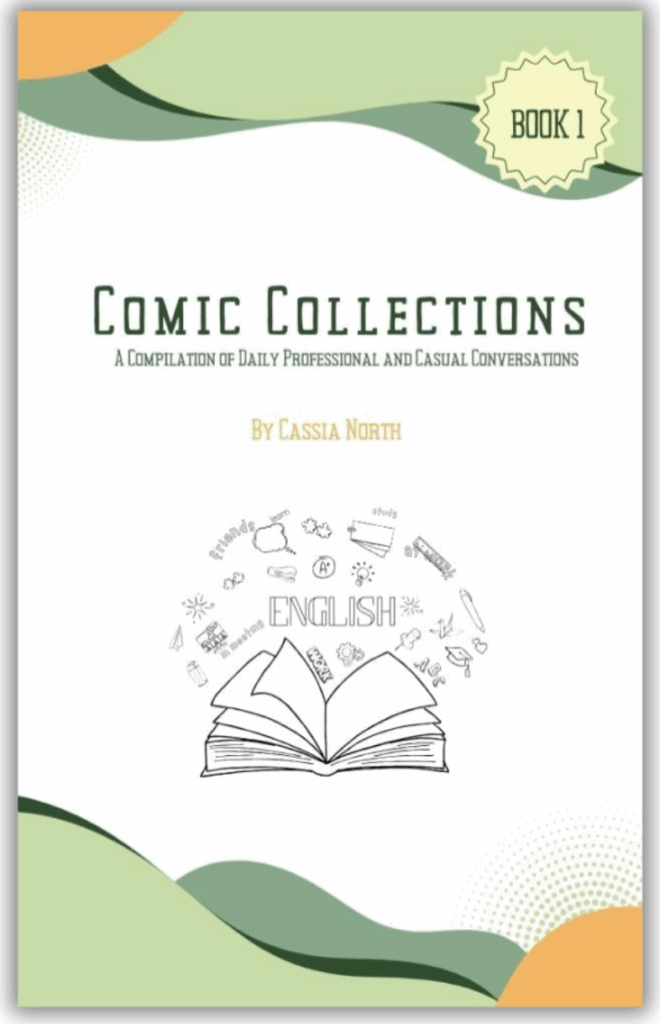







 Facebook Live serves as a critical component in modern marketing strategies, tapping into the growing consumer preference for live video. Studies have shown that users spend up to three times longer watching live videos when compared to pre-recorded ones, highlighting the compelling nature of real-time interaction. Businesses utilize this platform to host Q&A sessions, behind-the-scenes tours, product demonstrations, and more, effectively increasing engagement and boosting viewer retention. The immediate feedback loop created during live broadcasts provides invaluable insights into viewer preferences and behaviors, enabling marketers to refine their strategies promptly.
Facebook Live serves as a critical component in modern marketing strategies, tapping into the growing consumer preference for live video. Studies have shown that users spend up to three times longer watching live videos when compared to pre-recorded ones, highlighting the compelling nature of real-time interaction. Businesses utilize this platform to host Q&A sessions, behind-the-scenes tours, product demonstrations, and more, effectively increasing engagement and boosting viewer retention. The immediate feedback loop created during live broadcasts provides invaluable insights into viewer preferences and behaviors, enabling marketers to refine their strategies promptly. With Facebook Live, you can use your phone or computer to broadcast a live video directly on Facebook. This video will be shared live on your news feed for your friends and followers. Since its broader rollout in 2016, Facebook Live has become an integral tool for individuals, brands, and content creators aiming to engage their followers in real-time. This platform supports different types of content, from spontaneous broadcasts to highly produced events, making it versatile for various use cases.
With Facebook Live, you can use your phone or computer to broadcast a live video directly on Facebook. This video will be shared live on your news feed for your friends and followers. Since its broader rollout in 2016, Facebook Live has become an integral tool for individuals, brands, and content creators aiming to engage their followers in real-time. This platform supports different types of content, from spontaneous broadcasts to highly produced events, making it versatile for various use cases.
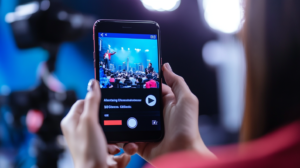 Effectively leveraging Facebook Live requires thorough planning and strategizing before going live. Successful broadcasts don’t happen by accident—they are the result of careful preparation, understanding the audience, and curating the content to match viewers’ interests and needs. Here’s how you can plan your Facebook Live session to maximize engagement and impact.
Effectively leveraging Facebook Live requires thorough planning and strategizing before going live. Successful broadcasts don’t happen by accident—they are the result of careful preparation, understanding the audience, and curating the content to match viewers’ interests and needs. Here’s how you can plan your Facebook Live session to maximize engagement and impact.



 Executing a successful Facebook Live broadcast requires not only engaging content but also a reliable technical setup. Having good equipment and software makes a big difference in both how good it looks and how smoothly it runs for you and your viewers.
Executing a successful Facebook Live broadcast requires not only engaging content but also a reliable technical setup. Having good equipment and software makes a big difference in both how good it looks and how smoothly it runs for you and your viewers.
 Facebook Live lets you connect with viewers directly as you broadcast! This two-way street keeps your audience hooked and coming back for more. Effective engagement not only makes the broadcast more interactive and lively but also encourages viewers to participate and share the content. Here are some techniques to interact with your audience during the broadcast, along with examples of engaging live content formats.
Facebook Live lets you connect with viewers directly as you broadcast! This two-way street keeps your audience hooked and coming back for more. Effective engagement not only makes the broadcast more interactive and lively but also encourages viewers to participate and share the content. Here are some techniques to interact with your audience during the broadcast, along with examples of engaging live content formats.

 Facebook Live offers a dynamic tool for marketers to enhance their digital strategies by providing a platform for real-time customer engagement and content delivery. Integrating live video into your overall marketing strategy can increase reach, engagement, and conversion rates, especially when it is part of a comprehensive and interactive campaign.
Facebook Live offers a dynamic tool for marketers to enhance their digital strategies by providing a platform for real-time customer engagement and content delivery. Integrating live video into your overall marketing strategy can increase reach, engagement, and conversion rates, especially when it is part of a comprehensive and interactive campaign.

 After a Facebook Live session concludes, the opportunity to connect with your audience and leverage the content you’ve created continues. Effective post-broadcast practices can help maximize the impact of your live session, maintain audience interest, and improve future broadcasts based on performance insights.
After a Facebook Live session concludes, the opportunity to connect with your audience and leverage the content you’ve created continues. Effective post-broadcast practices can help maximize the impact of your live session, maintain audience interest, and improve future broadcasts based on performance insights.

 Throughout this guide, we’ve explored the dynamic capabilities of Facebook Live as an indispensable tool for video marketing. From strategic planning and technical setup to engaging real-time interaction and effective post-broadcast practices, Facebook Live offers a comprehensive platform for connecting with audiences authentically and immediately. The success stories of brands like BuzzFeed, Benefit Cosmetics, and Tough Mudder underscores its potential to transform marketing strategies and foster deeper audience relationships. Embrace Facebook Live to elevate your marketing efforts; its direct engagement capabilities can significantly enhance your brand’s visibility and interaction in today’s digital landscape.
Throughout this guide, we’ve explored the dynamic capabilities of Facebook Live as an indispensable tool for video marketing. From strategic planning and technical setup to engaging real-time interaction and effective post-broadcast practices, Facebook Live offers a comprehensive platform for connecting with audiences authentically and immediately. The success stories of brands like BuzzFeed, Benefit Cosmetics, and Tough Mudder underscores its potential to transform marketing strategies and foster deeper audience relationships. Embrace Facebook Live to elevate your marketing efforts; its direct engagement capabilities can significantly enhance your brand’s visibility and interaction in today’s digital landscape.

 In today’s digital-first business environment, emails have become the lifeline of professional communication, connecting colleagues, clients, and partners across the globe. In today’s professional world, writing strong business emails is no longer optional, it’s essential. Well-written emails ensure clear communication, foster professional relationships, and facilitate efficient business operations. Over previous discussions, we’ve laid a solid foundation by exploring key aspects of business email writing, including sentence structure & clarity, mechanics & punctuation, subject-verb agreement & tenses, and word choice & usage. These elements are essential for ensuring their recipients understand and take your emails seriously.
In today’s digital-first business environment, emails have become the lifeline of professional communication, connecting colleagues, clients, and partners across the globe. In today’s professional world, writing strong business emails is no longer optional, it’s essential. Well-written emails ensure clear communication, foster professional relationships, and facilitate efficient business operations. Over previous discussions, we’ve laid a solid foundation by exploring key aspects of business email writing, including sentence structure & clarity, mechanics & punctuation, subject-verb agreement & tenses, and word choice & usage. These elements are essential for ensuring their recipients understand and take your emails seriously. However, mastering business emails goes beyond these fundamental components. It requires understanding more nuanced aspects of communication, such as the email’s tone, structure, and etiquette surrounding email interactions. These additional tips focus on advanced strategies and etiquette that can significantly enhance the effectiveness of your email communication. From crafting concise and compelling messages to understanding the importance of cultural sensitivity, these strategies are designed to refine your email writing skills further.
However, mastering business emails goes beyond these fundamental components. It requires understanding more nuanced aspects of communication, such as the email’s tone, structure, and etiquette surrounding email interactions. These additional tips focus on advanced strategies and etiquette that can significantly enhance the effectiveness of your email communication. From crafting concise and compelling messages to understanding the importance of cultural sensitivity, these strategies are designed to refine your email writing skills further. In the realm of business emails, the ability to communicate with precision and brevity is invaluable. This approach not only respects the recipient’s time but also ensures your message is understood with minimal effort. It can be challenging to write emails that are both short and clear, but that’s the key to getting your message across effectively.
In the realm of business emails, the ability to communicate with precision and brevity is invaluable. This approach not only respects the recipient’s time but also ensures your message is understood with minimal effort. It can be challenging to write emails that are both short and clear, but that’s the key to getting your message across effectively. Conciseness in email communication is about delivering your message in the fewest possible words without omitting essential information. This efficiency allows the recipient to quickly grasp your message’s essence, enhancing the likelihood of a prompt and appropriate response. However, brevity should not come at the expense of clarity. Every sentence should serve a purpose, whether it’s to convey a key point, provide necessary details, or prompt action. The goal is to eliminate unnecessary words while ensuring your message remains clear and your intent unambiguous.
Conciseness in email communication is about delivering your message in the fewest possible words without omitting essential information. This efficiency allows the recipient to quickly grasp your message’s essence, enhancing the likelihood of a prompt and appropriate response. However, brevity should not come at the expense of clarity. Every sentence should serve a purpose, whether it’s to convey a key point, provide necessary details, or prompt action. The goal is to eliminate unnecessary words while ensuring your message remains clear and your intent unambiguous. Eliminating redundancy and fluff is crucial for writing concise emails. Redundancy occurs when the same information is repeated unnecessarily, while fluff consists of words, phrases, or sentences that do not add value to the message. To combat these issues, start by scrutinizing each sentence for unnecessary repetitions and superfluous information. Phrases like “I am writing to inform you” can often be removed, as the act of sending the email already implies this. Active voice gets straight to the point and uses fewer words, making your writing clear and easy to read. For instance, “The meeting was scheduled by the team” can be more succinctly expressed as “The team scheduled the meeting.”
Eliminating redundancy and fluff is crucial for writing concise emails. Redundancy occurs when the same information is repeated unnecessarily, while fluff consists of words, phrases, or sentences that do not add value to the message. To combat these issues, start by scrutinizing each sentence for unnecessary repetitions and superfluous information. Phrases like “I am writing to inform you” can often be removed, as the act of sending the email already implies this. Active voice gets straight to the point and uses fewer words, making your writing clear and easy to read. For instance, “The meeting was scheduled by the team” can be more succinctly expressed as “The team scheduled the meeting.” The bullet points and numbered lists are excellent tools for enhancing clarity and conciseness in emails. They allow you to present information in an organized manner, making it easier for the recipient to scan and understand key points quickly. When listing items, actions, or key points, bullet points can highlight each element distinctly, drawing attention to important details without getting lost in lengthy paragraphs.
The bullet points and numbered lists are excellent tools for enhancing clarity and conciseness in emails. They allow you to present information in an organized manner, making it easier for the recipient to scan and understand key points quickly. When listing items, actions, or key points, bullet points can highlight each element distinctly, drawing attention to important details without getting lost in lengthy paragraphs. Numbered lists are particularly useful when outlining steps, instructions, or reasons. They provide a clear structure that guides the reader through your content sequentially, ensuring that complex information is digestible and actionable. Additionally, using lists can break up large blocks of text, making your email more visually appealing and less daunting to read.
Numbered lists are particularly useful when outlining steps, instructions, or reasons. They provide a clear structure that guides the reader through your content sequentially, ensuring that complex information is digestible and actionable. Additionally, using lists can break up large blocks of text, making your email more visually appealing and less daunting to read. The way you write your business emails can make a big difference in how your message is understood and whether you achieve your goal. It’s the subtleties in language that can convey respect, establish rapport, and demonstrate professionalism. Similarly, politeness is not just a matter of etiquette; it’s essential for fostering positive relationships and ensuring your emails are received in the best possible light. This section explores how to adjust the tone to suit the purpose of your email and the recipient, strategies for ensuring politeness and respect, and the importance of cultural sensitivity.
The way you write your business emails can make a big difference in how your message is understood and whether you achieve your goal. It’s the subtleties in language that can convey respect, establish rapport, and demonstrate professionalism. Similarly, politeness is not just a matter of etiquette; it’s essential for fostering positive relationships and ensuring your emails are received in the best possible light. This section explores how to adjust the tone to suit the purpose of your email and the recipient, strategies for ensuring politeness and respect, and the importance of cultural sensitivity. The tone of your email should be tailored to both its purpose and the recipient. A message to a long-time colleague can afford to be more casual and warm, whereas an email to a new client or senior executive should be more formal and reserved. Identifying the purpose of your email is the first step—whether it’s to inform, request, apologize, or persuade. This purpose should guide your tone, ensuring it’s appropriate and effective. For instance, a persuasive email might adopt a confident yet re
The tone of your email should be tailored to both its purpose and the recipient. A message to a long-time colleague can afford to be more casual and warm, whereas an email to a new client or senior executive should be more formal and reserved. Identifying the purpose of your email is the first step—whether it’s to inform, request, apologize, or persuade. This purpose should guide your tone, ensuring it’s appropriate and effective. For instance, a persuasive email might adopt a confident yet re
 Cultural sensitivity is crucial in international business communications. Different cultures have varying norms and expectations regarding formality, directness, and etiquette. For example, some cultures value a highly formal approach with titles and surnames, while others may prefer first-name basis interactions even in professional settings. Researching and understanding these cultural nuances can prevent misunderstandings and foster more effective communication. Additionally, being mindful of holidays, work hours, and significant cultural events in the recipient’s country can further demonstrate respect and cultural awareness.
Cultural sensitivity is crucial in international business communications. Different cultures have varying norms and expectations regarding formality, directness, and etiquette. For example, some cultures value a highly formal approach with titles and surnames, while others may prefer first-name basis interactions even in professional settings. Researching and understanding these cultural nuances can prevent misunderstandings and foster more effective communication. Additionally, being mindful of holidays, work hours, and significant cultural events in the recipient’s country can further demonstrate respect and cultural awareness.

 The structure of your email should guide the reader through your message in a coherent and logical manner. Begin with a clear introduction that sets the context and purpose of the email. This could be a brief summary of the situation, a reference to a previous communication, or an introduction to the topic at hand.
The structure of your email should guide the reader through your message in a coherent and logical manner. Begin with a clear introduction that sets the context and purpose of the email. This could be a brief summary of the situation, a reference to a previous communication, or an introduction to the topic at hand. Your email’s opening should grab the recipient’s attention and encourage them to read on. It should be relevant, engaging, and convey the value of your message. The opening lines set the tone for the rest of the email, so make them count.
Your email’s opening should grab the recipient’s attention and encourage them to read on. It should be relevant, engaging, and convey the value of your message. The opening lines set the tone for the rest of the email, so make them count.



 Navigating follow-up emails and managing long email threads are vital skills in professional communication. The way you write follow-up emails, whether for a request, meeting, or anything else, can make a big difference in how well they work. Similarly, maintaining clarity and courtesy in long email threads or when altering the recipient list is crucial for smooth, professional interactions. This section will delve into the best practices for follow-up emails, strategies for managing lengthy email threads, and the etiquette of modifying the recipient list.
Navigating follow-up emails and managing long email threads are vital skills in professional communication. The way you write follow-up emails, whether for a request, meeting, or anything else, can make a big difference in how well they work. Similarly, maintaining clarity and courtesy in long email threads or when altering the recipient list is crucial for smooth, professional interactions. This section will delve into the best practices for follow-up emails, strategies for managing lengthy email threads, and the etiquette of modifying the recipient list.
 Long email threads can become confusing, especially when the subject veers off from the original topic. To keep the conversation clear, consider starting a new thread with a summarized update or conclusion of the previous discussion when shifting to a new but related topic. This keeps the email focused and accessible to those who might have been added to the conversation later.
Long email threads can become confusing, especially when the subject veers off from the original topic. To keep the conversation clear, consider starting a new thread with a summarized update or conclusion of the previous discussion when shifting to a new but related topic. This keeps the email focused and accessible to those who might have been added to the conversation later. When adding someone to an ongoing email thread, it’s polite to introduce the new recipient at the beginning of your email, explaining why they’ve been added. This not only informs the original recipients but also helps the new add-on to understand the context. For example, “I’ve added John Doe to this conversation as he will be leading the project moving forward.”
When adding someone to an ongoing email thread, it’s polite to introduce the new recipient at the beginning of your email, explaining why they’ve been added. This not only informs the original recipients but also helps the new add-on to understand the context. For example, “I’ve added John Doe to this conversation as he will be leading the project moving forward.” Mastering the art of business email communication is an ongoing journey that extends far beyond understanding the basics of grammar and punctuation. As we have explored in this article, numerous nuances and advanced strategies can significantly enhance your email’s effectiveness. From the art of precision and brevity, ensuring your messages are concise yet clear, to the delicate balance of tone and politeness, which can greatly influence how your messages are received. We’ve delved into the importance of a well-structured email, the critical role of a compelling subject line, and the best practices for managing follow-ups and email threads.
Mastering the art of business email communication is an ongoing journey that extends far beyond understanding the basics of grammar and punctuation. As we have explored in this article, numerous nuances and advanced strategies can significantly enhance your email’s effectiveness. From the art of precision and brevity, ensuring your messages are concise yet clear, to the delicate balance of tone and politeness, which can greatly influence how your messages are received. We’ve delved into the importance of a well-structured email, the critical role of a compelling subject line, and the best practices for managing follow-ups and email threads. We encourage you to not only apply these strategies to your own email practices but also to share your experiences. Whether you’ve found success with a particularly compelling subject line, navigated a complex email thread with ease, or discovered a new approach to follow-up emails, your insights can benefit others. By sharing our experiences, we contribute to a community of professionals who value effective communication as a cornerstone of success.
We encourage you to not only apply these strategies to your own email practices but also to share your experiences. Whether you’ve found success with a particularly compelling subject line, navigated a complex email thread with ease, or discovered a new approach to follow-up emails, your insights can benefit others. By sharing our experiences, we contribute to a community of professionals who value effective communication as a cornerstone of success.






 In the digital age, advertising has transcended traditional boundaries, evolving into a dynamic force that drives consumer behavior and business growth. Among the myriad of digital marketing strategies, targeted advertising stands out as a cornerstone, enabling businesses to deliver their messages to the right audience at the right time. This precision not only enhances the effectiveness of campaigns but also maximizes return on investment by minimizing the wastage of resources on uninterested parties.
In the digital age, advertising has transcended traditional boundaries, evolving into a dynamic force that drives consumer behavior and business growth. Among the myriad of digital marketing strategies, targeted advertising stands out as a cornerstone, enabling businesses to deliver their messages to the right audience at the right time. This precision not only enhances the effectiveness of campaigns but also maximizes return on investment by minimizing the wastage of resources on uninterested parties. With billions of users and robust data analysis, Facebook reigns supreme in online advertising. It provides marketers with an unmatched reach across various demographics, making it crucial for targeting specific audiences. Facebook’s advanced ad tools allow for precise targeting based on factors like age, interests, and online behavior, guaranteeing that ads reach the most relevant viewers.
With billions of users and robust data analysis, Facebook reigns supreme in online advertising. It provides marketers with an unmatched reach across various demographics, making it crucial for targeting specific audiences. Facebook’s advanced ad tools allow for precise targeting based on factors like age, interests, and online behavior, guaranteeing that ads reach the most relevant viewers. Facebook Ads represent one of the most powerful tools in the digital marketer’s arsenal. They leverage Facebook’s extensive user network to deliver tailored advertisements directly to a selected audience. This system operates within the Facebook platform, including Instagram and Messenger, allowing advertisers to place their messages in front of users not just based on traditional ad spaces but also integrated naturally into their social feeds.
Facebook Ads represent one of the most powerful tools in the digital marketer’s arsenal. They leverage Facebook’s extensive user network to deliver tailored advertisements directly to a selected audience. This system operates within the Facebook platform, including Instagram and Messenger, allowing advertisers to place their messages in front of users not just based on traditional ad spaces but also integrated naturally into their social feeds.
 Facebook ads go far and wide, reaching nearly everyone on the planet. Powerful targeting tools pinpoint the right audience using all sorts of info – age, location, what they’re into, and even how they use Facebook. Plus, Facebook’s innovative system prioritizes showing your ads to people most likely to care, so you get the biggest bang for your buck.
Facebook ads go far and wide, reaching nearly everyone on the planet. Powerful targeting tools pinpoint the right audience using all sorts of info – age, location, what they’re into, and even how they use Facebook. Plus, Facebook’s innovative system prioritizes showing your ads to people most likely to care, so you get the biggest bang for your buck. Facebook goes beyond just showing your ads to a lot of people—it helps you see how well they’re working, too. With its analytics tools, you can track your campaigns in real time, see who sees your ads, and even measure whether people are taking the actions you want. This lets you constantly improve your marketing strategy to get the best results.
Facebook goes beyond just showing your ads to a lot of people—it helps you see how well they’re working, too. With its analytics tools, you can track your campaigns in real time, see who sees your ads, and even measure whether people are taking the actions you want. This lets you constantly improve your marketing strategy to get the best results. In the digital marketing world, the scattergun approach of traditional advertising is being swiftly replaced by targeted advertising. This strategy is essential not only for maximizing the effectiveness of advertising campaigns but also for enhancing user experience by aligning content with user preferences and needs.
In the digital marketing world, the scattergun approach of traditional advertising is being swiftly replaced by targeted advertising. This strategy is essential not only for maximizing the effectiveness of advertising campaigns but also for enhancing user experience by aligning content with user preferences and needs. Through Facebook ads, marketers can achieve a high degree of granularity in their advertising efforts, making them an essential element of modern digital marketing strategies. Whether the goal is to increase brand recognition, boost website traffic, or drive sales, Facebook’s sophisticated targeting capabilities make it possible to achieve these objectives with remarkable efficiency and effectiveness.
Through Facebook ads, marketers can achieve a high degree of granularity in their advertising efforts, making them an essential element of modern digital marketing strategies. Whether the goal is to increase brand recognition, boost website traffic, or drive sales, Facebook’s sophisticated targeting capabilities make it possible to achieve these objectives with remarkable efficiency and effectiveness. Demographic targeting involves segmenting the market based on attributes such as age, gender, location, marital status, education level, and more. Facebook, with its vast database, offers advertisers the ability to zero in on these demographics with precision, crafting messages that resonate with each group’s unique preferences and lifestyles.
Demographic targeting involves segmenting the market based on attributes such as age, gender, location, marital status, education level, and more. Facebook, with its vast database, offers advertisers the ability to zero in on these demographics with precision, crafting messages that resonate with each group’s unique preferences and lifestyles. Age:
Age:  Location: Geo-targeting allows ads to be shown to users based on specific locations, from broad regions to particular cities or even neighborhoods. This is particularly useful for local businesses that want to attract nearby customers, such as restaurants or retail stores. A local gym might target ads to Facebook users within a 10-mile radius to drive local sign-ups.
Location: Geo-targeting allows ads to be shown to users based on specific locations, from broad regions to particular cities or even neighborhoods. This is particularly useful for local businesses that want to attract nearby customers, such as restaurants or retail stores. A local gym might target ads to Facebook users within a 10-mile radius to drive local sign-ups. Gender: Products or services often appeal more to one gender than another. For instance, a brand that sells women’s athletic wear will target female Facebook users to increase the relevance and effectiveness of their advertising.
Gender: Products or services often appeal more to one gender than another. For instance, a brand that sells women’s athletic wear will target female Facebook users to increase the relevance and effectiveness of their advertising. Marital Status: This can be a crucial factor in marketing products related to relationship stages, such as wedding services targeting engaged users or baby products aimed at newly married couples.
Marital Status: This can be a crucial factor in marketing products related to relationship stages, such as wedding services targeting engaged users or baby products aimed at newly married couples. Education Level: Targeting based on education can help tailor the messaging and product offerings based on the audience’s educational background. For example, educational software for advanced learning can be targeted at users who have indicated a higher education level.
Education Level: Targeting based on education can help tailor the messaging and product offerings based on the audience’s educational background. For example, educational software for advanced learning can be targeted at users who have indicated a higher education level.
 However, demographic targeting does have its limitations. Relying solely on demographic data might lead to assumptions that overlook the diversity within each group. Users within the same demographic can have vastly different interests and behaviors, which means advertisers might miss potential customers who fall outside their targeted demographics but may still be interested in the product.
However, demographic targeting does have its limitations. Relying solely on demographic data might lead to assumptions that overlook the diversity within each group. Users within the same demographic can have vastly different interests and behaviors, which means advertisers might miss potential customers who fall outside their targeted demographics but may still be interested in the product. Interest-based targeting is a powerful method that Facebook offers to help advertisers reach users based on their hobbies, likes, and activities on the platform. This approach goes beyond demographic factors, diving deeper into the audience’s psyche and preferences, allowing for more personalized and relevant advertising.
Interest-based targeting is a powerful method that Facebook offers to help advertisers reach users based on their hobbies, likes, and activities on the platform. This approach goes beyond demographic factors, diving deeper into the audience’s psyche and preferences, allowing for more personalized and relevant advertising.


 Information on past purchases, both on and off Facebook, gives advertisers clues about what products users might be interested in buying again.
Information on past purchases, both on and off Facebook, gives advertisers clues about what products users might be interested in buying again. Data on whether users access Facebook from mobile devices, desktops, or tablets, helping tailor ads to the device most commonly used.
Data on whether users access Facebook from mobile devices, desktops, or tablets, helping tailor ads to the device most commonly used. Tracks indications of recent travels or regular commuting, useful for local businesses or travel-related services.
Tracks indications of recent travels or regular commuting, useful for local businesses or travel-related services. Insights into which types of posts and ads users have interacted with in the past, including likes, shares, and comments.
Insights into which types of posts and ads users have interacted with in the past, including likes, shares, and comments.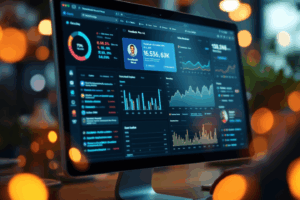 Data collected from websites and apps connected with Facebook, through tools like Facebook Pixel and SDK, which track user interactions outside of Facebook itself.
Data collected from websites and apps connected with Facebook, through tools like Facebook Pixel and SDK, which track user interactions outside of Facebook itself.
 The balance between broad and narrow targeting is crucial. Too broad, and you risk diluting your message across an audience that may not be interested; too narrow, and you may miss potential customers who could convert if given the chance. The goal is to find a sweet spot where the targeting is specific enough to be relevant yet not so exclusive that it omits potential leads. This balance maximizes both reach and relevance, ensuring optimal use of your advertising budget.
The balance between broad and narrow targeting is crucial. Too broad, and you risk diluting your message across an audience that may not be interested; too narrow, and you may miss potential customers who could convert if given the chance. The goal is to find a sweet spot where the targeting is specific enough to be relevant yet not so exclusive that it omits potential leads. This balance maximizes both reach and relevance, ensuring optimal use of your advertising budget.
 The integration of these targeting strategies enables marketers to craft campaigns that are not just seen but are also relevant and compelling to the audience they reach. This relevance is key to driving higher engagement rates, increasing conversions, and ultimately maximizing the return on investment in advertising spend.
The integration of these targeting strategies enables marketers to craft campaigns that are not just seen but are also relevant and compelling to the audience they reach. This relevance is key to driving higher engagement rates, increasing conversions, and ultimately maximizing the return on investment in advertising spend.






 The rise of social media in the last twenty years has revolutionized marketing.
The rise of social media in the last twenty years has revolutionized marketing. Facebook Groups serve as virtual communities where members can discuss various topics, share content, and interact not just with the brand but also with each other. This setting creates a unique opportunity for businesses to foster deeper relationships with their audience, transforming customers into active community members. Brands can leverage these groups to conduct market research, gather feedback, test new ideas, and improve customer loyalty by providing exclusive experiences and information. Moreover, the algorithmic preference that Facebook gives to group activity ensures higher engagement rates, making these groups a valuable tool for maintaining visibility in users’ feeds.
Facebook Groups serve as virtual communities where members can discuss various topics, share content, and interact not just with the brand but also with each other. This setting creates a unique opportunity for businesses to foster deeper relationships with their audience, transforming customers into active community members. Brands can leverage these groups to conduct market research, gather feedback, test new ideas, and improve customer loyalty by providing exclusive experiences and information. Moreover, the algorithmic preference that Facebook gives to group activity ensures higher engagement rates, making these groups a valuable tool for maintaining visibility in users’ feeds. In today’s ever-evolving digital world, Facebook remains a cornerstone of social media marketing due to its vast global user base and robust engagement tools. Among these tools, Facebook Groups stand out as particularly effective for brands looking to deepen their consumer relationships and foster community spirit. Unlike traditional Facebook Pages that are designed for broadcasting messages, Groups offer a platform for two-way interactions that can significantly enhance user engagement and brand loyalty.
In today’s ever-evolving digital world, Facebook remains a cornerstone of social media marketing due to its vast global user base and robust engagement tools. Among these tools, Facebook Groups stand out as particularly effective for brands looking to deepen their consumer relationships and foster community spirit. Unlike traditional Facebook Pages that are designed for broadcasting messages, Groups offer a platform for two-way interactions that can significantly enhance user engagement and brand loyalty. Facebook Groups excel at creating a space for active interaction among members. Groups are designed to be communities around shared interests, which naturally encourages more frequent and meaningful interactions among members. Statistics highlight that posts in Facebook Groups have a higher chance of appearing in a member’s feed compared to posts from a page. This is due to Facebook’s algorithm, which prioritizes content from Groups where users interact more regularly. For instance, according to data from Facebook, active group members are likely to spend more time on the platform and engage with content more intensely than the average user. This heightened engagement is crucial not only for keeping the audience interested but also for increasing the visibility of the brand’s content without the direct cost of advertising.
Facebook Groups excel at creating a space for active interaction among members. Groups are designed to be communities around shared interests, which naturally encourages more frequent and meaningful interactions among members. Statistics highlight that posts in Facebook Groups have a higher chance of appearing in a member’s feed compared to posts from a page. This is due to Facebook’s algorithm, which prioritizes content from Groups where users interact more regularly. For instance, according to data from Facebook, active group members are likely to spend more time on the platform and engage with content more intensely than the average user. This heightened engagement is crucial not only for keeping the audience interested but also for increasing the visibility of the brand’s content without the direct cost of advertising. Facebook Groups also allow brands to segment their audiences into more targeted communities. For example, a brand can create groups based on product lines, user demographics, or even levels of brand loyalty. This segmentation enables more tailored communication strategies and can help brands deliver more personalized and relevant content. Such relevance increases the value of each interaction to the members, fostering a stronger connection to the brand.
Facebook Groups also allow brands to segment their audiences into more targeted communities. For example, a brand can create groups based on product lines, user demographics, or even levels of brand loyalty. This segmentation enables more tailored communication strategies and can help brands deliver more personalized and relevant content. Such relevance increases the value of each interaction to the members, fostering a stronger connection to the brand.
 Identifying your target audience and strategically setting up your Facebook Group is crucial for maximizing its effectiveness as a digital marketing tool. While creating a Group is simple, this guide will walk you through the steps and tips on choosing the right settings and establishing group rules to foster a positive and engaging environment for your ideal members.
Identifying your target audience and strategically setting up your Facebook Group is crucial for maximizing its effectiveness as a digital marketing tool. While creating a Group is simple, this guide will walk you through the steps and tips on choosing the right settings and establishing group rules to foster a positive and engaging environment for your ideal members.

 Engaging the members of a Facebook Group is crucial to its success. Active and engaged groups can significantly amplify brand visibility and loyalty. To achieve this, brands must employ strategic practices that foster interaction and maximize Facebook’s numerous features designed to boost user activity. Here are some best practices and content ideas for initiating and maintaining engagement in Facebook Groups.
Engaging the members of a Facebook Group is crucial to its success. Active and engaged groups can significantly amplify brand visibility and loyalty. To achieve this, brands must employ strategic practices that foster interaction and maximize Facebook’s numerous features designed to boost user activity. Here are some best practices and content ideas for initiating and maintaining engagement in Facebook Groups.


 Facebook Groups are not just platforms for conversation; they are potent tools for building deep, lasting brand loyalty. Brands can transform casual followers into staunch advocates through personalized interactions and a strong sense of community. Below, we explore how some brands have successfully built communities, the techniques for personalizing interactions, and ways to measure the impact of these engagements on brand loyalty.
Facebook Groups are not just platforms for conversation; they are potent tools for building deep, lasting brand loyalty. Brands can transform casual followers into staunch advocates through personalized interactions and a strong sense of community. Below, we explore how some brands have successfully built communities, the techniques for personalizing interactions, and ways to measure the impact of these engagements on brand loyalty.




 Managing Facebook Groups effectively presents several challenges that can hinder their potential as tools for building brand loyalty and engagement. Here, we discuss some common obstacles and provide practical solutions to help brands overcome these hurdles.
Managing Facebook Groups effectively presents several challenges that can hinder their potential as tools for building brand loyalty and engagement. Here, we discuss some common obstacles and provide practical solutions to help brands overcome these hurdles.

 Facebook Groups have become a vital component of digital marketing strategies for many brands, offering a unique way to engage directly with customers and cultivate a community. As we look to the future, several trends and potential changes could shape how Facebook manages or prioritizes these groups, further influencing their role in broader digital marketing campaigns.
Facebook Groups have become a vital component of digital marketing strategies for many brands, offering a unique way to engage directly with customers and cultivate a community. As we look to the future, several trends and potential changes could shape how Facebook manages or prioritizes these groups, further influencing their role in broader digital marketing campaigns.
 Facebook Groups can serve multiple functions in a digital marketing strategy, transcending traditional advertising by creating a genuine sense of community among users. Here’s how they fit into the broader marketing landscape:
Facebook Groups can serve multiple functions in a digital marketing strategy, transcending traditional advertising by creating a genuine sense of community among users. Here’s how they fit into the broader marketing landscape: Looking ahead, Facebook Groups are likely to become even more integrated into digital marketing strategies. Brands that leverage these platforms effectively will not only see enhanced customer engagement but also more profound insights into their market, contributing to more personalized and successful marketing efforts.
Looking ahead, Facebook Groups are likely to become even more integrated into digital marketing strategies. Brands that leverage these platforms effectively will not only see enhanced customer engagement but also more profound insights into their market, contributing to more personalized and successful marketing efforts.



 In the digital age, emails remain a cornerstone of professional communication. Whether it’s coordinating with a team, reaching out to a client, or networking with industry peers, the emails we send play a crucial role in shaping our professional image. However, amidst the daily flurry of composing, sending, and replying, it’s easy to overlook a fundamental element that can make or break our communication: word choice and usage.
In the digital age, emails remain a cornerstone of professional communication. Whether it’s coordinating with a team, reaching out to a client, or networking with industry peers, the emails we send play a crucial role in shaping our professional image. However, amidst the daily flurry of composing, sending, and replying, it’s easy to overlook a fundamental element that can make or break our communication: word choice and usage. This blog is designed for professionals who recognize the value of effective email communication and are eager to refine their skills. Through a casual yet insightful exploration, we’ll delve into the nuances of word choice and usage in emails, highlighting how different contexts—such as communicating with peers versus superiors—demand a nuanced approach. From common pitfalls to avoid to practical strategies for enhancing the impact of your emails, our journey will equip you with the insights needed to navigate the complex landscape of professional email communication.
This blog is designed for professionals who recognize the value of effective email communication and are eager to refine their skills. Through a casual yet insightful exploration, we’ll delve into the nuances of word choice and usage in emails, highlighting how different contexts—such as communicating with peers versus superiors—demand a nuanced approach. From common pitfalls to avoid to practical strategies for enhancing the impact of your emails, our journey will equip you with the insights needed to navigate the complex landscape of professional email communication. In the realm of professional communication, emails stand as both a tool and a test of our ability to convey thoughts, directives, and sentiments effectively. The words we choose serve as the building blocks of this communication, each carrying weight and connotation that can significantly influence the tone and clarity of our message. Understanding the impact of word choice is not just about crafting emails; it’s about mastering the art of digital conversation in a professional landscape.
In the realm of professional communication, emails stand as both a tool and a test of our ability to convey thoughts, directives, and sentiments effectively. The words we choose serve as the building blocks of this communication, each carrying weight and connotation that can significantly influence the tone and clarity of our message. Understanding the impact of word choice is not just about crafting emails; it’s about mastering the art of digital conversation in a professional landscape. The tone of an email sets the stage for the recipient’s perception and response. It’s the subtle cues in our word choice that can make an email sound authoritative, collaborative, demanding, or even apologetic. Consider the difference in tone between asking for someone’s “input” versus their “feedback” on a document. While both seek the recipient’s opinion, “input” suggests a more open-ended, collaborative approach, whereas “feedback” might imply a critique or evaluation, setting a slightly more formal tone.
The tone of an email sets the stage for the recipient’s perception and response. It’s the subtle cues in our word choice that can make an email sound authoritative, collaborative, demanding, or even apologetic. Consider the difference in tone between asking for someone’s “input” versus their “feedback” on a document. While both seek the recipient’s opinion, “input” suggests a more open-ended, collaborative approach, whereas “feedback” might imply a critique or evaluation, setting a slightly more formal tone.

 Consider the case of a project manager, Alex, who needed to address a project’s delay caused by another team’s late inputs. The initial email drafted by Alex was direct and slightly accusatory, highlighting the delay’s impact on the project timeline and indirectly blaming the other team. After reflection, Alex revised the email to acknowledge the collaborative nature of the project, expressed understanding of potential challenges the other team might be facing, and offered support to meet the shared deadline. The revised email not only received a prompt and positive response but also fostered a spirit of cooperation, demonstrating the profound impact of word choice on the outcome of professional interactions.
Consider the case of a project manager, Alex, who needed to address a project’s delay caused by another team’s late inputs. The initial email drafted by Alex was direct and slightly accusatory, highlighting the delay’s impact on the project timeline and indirectly blaming the other team. After reflection, Alex revised the email to acknowledge the collaborative nature of the project, expressed understanding of potential challenges the other team might be facing, and offered support to meet the shared deadline. The revised email not only received a prompt and positive response but also fostered a spirit of cooperation, demonstrating the profound impact of word choice on the outcome of professional interactions. Mastering email communication in a professional setting goes beyond impeccable grammar and a rich vocabulary. It demands a nuanced understanding of your audience, requiring you to tailor your tone, style, and language according to the recipient. This adaptability not only ensures your message is well-received but also strengthens professional relationships, fostering an environment of respect and understanding.
Mastering email communication in a professional setting goes beyond impeccable grammar and a rich vocabulary. It demands a nuanced understanding of your audience, requiring you to tailor your tone, style, and language according to the recipient. This adaptability not only ensures your message is well-received but also strengthens professional relationships, fostering an environment of respect and understanding. Emails to superiors necessitate a delicate balance between respect and assertiveness. The objective is to communicate your points clearly and confidently without overstepping. It’s about demonstrating your initiative and professionalism while showing due respect for their position and experience.
Emails to superiors necessitate a delicate balance between respect and assertiveness. The objective is to communicate your points clearly and confidently without overstepping. It’s about demonstrating your initiative and professionalism while showing due respect for their position and experience.
 Understanding the theory behind effective word choice and usage in emails is one thing, but seeing it in action brings a whole new level of clarity. This section delves into real-life examples and case studies that demonstrate the impact of thoughtfully chosen words in professional email communication. Through these examples, we’ll explore how subtle changes in wording can significantly alter the tone, clarity, and effectiveness of an email.
Understanding the theory behind effective word choice and usage in emails is one thing, but seeing it in action brings a whole new level of clarity. This section delves into real-life examples and case studies that demonstrate the impact of thoughtfully chosen words in professional email communication. Through these examples, we’ll explore how subtle changes in wording can significantly alter the tone, clarity, and effectiveness of an email.

 As we conclude our exploration into the nuanced world of “Word Choice and Usage in Emails,” we reflect on the profound lessons and insights that have unfolded across this journey. This blog has traversed the essential terrains of professional email communication, emphasizing the pivotal role of word choice in not only shaping our messages but also in defining the very relationships we maintain in our professional lives. Through practical advice, strategic insights, and real-life examples, we’ve delved deep into the art and science of email communication, highlighting how subtle shifts in language can dramatically alter perceptions, influence outcomes, and enhance understanding.
As we conclude our exploration into the nuanced world of “Word Choice and Usage in Emails,” we reflect on the profound lessons and insights that have unfolded across this journey. This blog has traversed the essential terrains of professional email communication, emphasizing the pivotal role of word choice in not only shaping our messages but also in defining the very relationships we maintain in our professional lives. Through practical advice, strategic insights, and real-life examples, we’ve delved deep into the art and science of email communication, highlighting how subtle shifts in language can dramatically alter perceptions, influence outcomes, and enhance understanding. The case studies presented serve not only as a testament to the transformative power of mindful communication but also as a beacon, guiding us toward more impactful and meaningful exchanges in our professional correspondences. They underscore the significance of adapting our messaging to the audience, context, and desired outcomes, showcasing the undeniable influence of well-chosen words on the effectiveness of our communication efforts.
The case studies presented serve not only as a testament to the transformative power of mindful communication but also as a beacon, guiding us toward more impactful and meaningful exchanges in our professional correspondences. They underscore the significance of adapting our messaging to the audience, context, and desired outcomes, showcasing the undeniable influence of well-chosen words on the effectiveness of our communication efforts. In essence, this blog invites us to view every email not just as a task or a mere transmission of information, but as an opportunity—to connect, to persuade, to engage, and to build stronger professional relationships. As we move forward, let us carry the lessons learned here into our daily practices. Let’s commit to continuous improvement, embracing each email as a canvas for our professionalism, empathy, and strategic thinking. May we all strive to harness the power of words to not only communicate but to connect, inspire, and thrive in the ever-evolving landscape of professional communication.
In essence, this blog invites us to view every email not just as a task or a mere transmission of information, but as an opportunity—to connect, to persuade, to engage, and to build stronger professional relationships. As we move forward, let us carry the lessons learned here into our daily practices. Let’s commit to continuous improvement, embracing each email as a canvas for our professionalism, empathy, and strategic thinking. May we all strive to harness the power of words to not only communicate but to connect, inspire, and thrive in the ever-evolving landscape of professional communication.

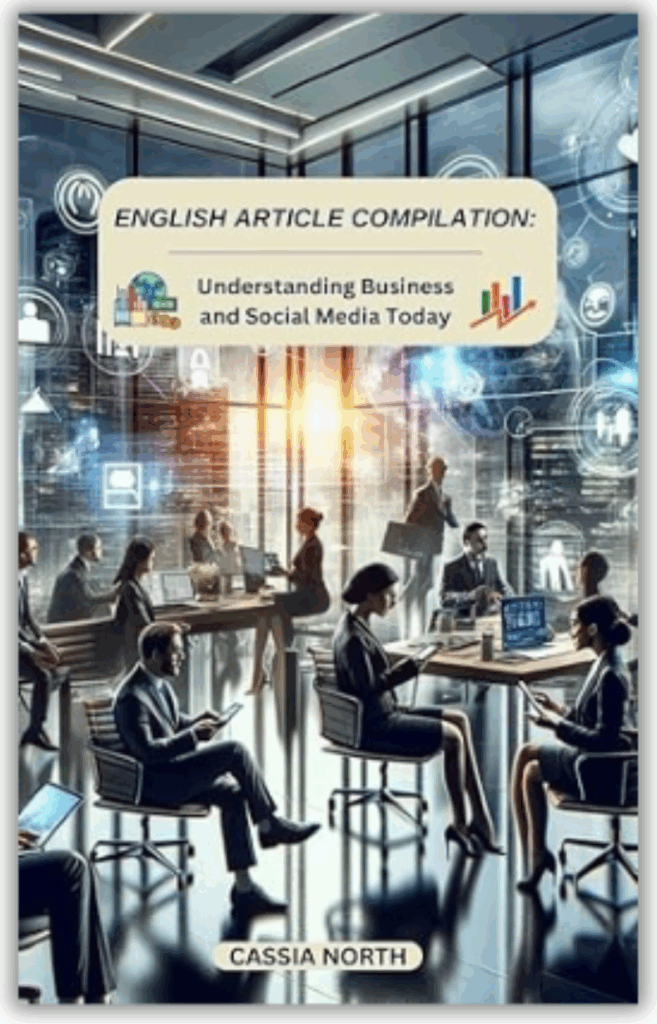


 In the realm of business, email stands as a pivotal medium of communication, seamlessly bridging geographical and hierarchical gaps. This digital correspondence not only facilitates swift exchanges but also embodies the professional image of the sender and, by extension, their organization. The essence of Business English in emails, therefore, transcends mere communication, acting as a marker of professionalism and clarity. In this light, mastering the nuances of grammatical accuracy—particularly subject-verb agreement and the correct application of tenses—becomes paramount.
In the realm of business, email stands as a pivotal medium of communication, seamlessly bridging geographical and hierarchical gaps. This digital correspondence not only facilitates swift exchanges but also embodies the professional image of the sender and, by extension, their organization. The essence of Business English in emails, therefore, transcends mere communication, acting as a marker of professionalism and clarity. In this light, mastering the nuances of grammatical accuracy—particularly subject-verb agreement and the correct application of tenses—becomes paramount. Subject-verb agreement, the syntactical rule requiring the verb to match its subject in number and person, stands as a cornerstone of clear expression. Misalignments here can lead to confusion, obscuring the intended message. Meanwhile, the adept use of tenses provides temporal clarity, crucial for setting expectations, scheduling, and recounting events or actions accurately. Together, these grammatical aspects ensure that emails are not only understood as intended but also reflect a level of professionalism that aligns with business standards.
Subject-verb agreement, the syntactical rule requiring the verb to match its subject in number and person, stands as a cornerstone of clear expression. Misalignments here can lead to confusion, obscuring the intended message. Meanwhile, the adept use of tenses provides temporal clarity, crucial for setting expectations, scheduling, and recounting events or actions accurately. Together, these grammatical aspects ensure that emails are not only understood as intended but also reflect a level of professionalism that aligns with business standards. Subject-verb agreement forms the bedrock of English grammar, dictating that the verb must match its subject in number and person. In essence, if the subject is singular, the verb used must also be singular. Likewise with plural, if the subject is plural, the verb must reflect that plurality. This rule is vital for constructing clear and grammatically correct sentences, serving as a fundamental principle that underpins the coherence of written communication.
Subject-verb agreement forms the bedrock of English grammar, dictating that the verb must match its subject in number and person. In essence, if the subject is singular, the verb used must also be singular. Likewise with plural, if the subject is plural, the verb must reflect that plurality. This rule is vital for constructing clear and grammatically correct sentences, serving as a fundamental principle that underpins the coherence of written communication. In the domain of business communication, where precision and clarity are paramount, subject-verb agreement assumes a critical role. A single grammatical slip can not only muddy the intended message but also inadvertently cast doubts on the writer’s attention to detail and competence. Such errors, albeit minor in isolation, can cumulatively undermine the professional image of an individual or organization. Therefore, mastering subject-verb agreement is not merely about adhering to grammatical norms but about ensuring that business correspondences convey the intended message with clarity and authority.
In the domain of business communication, where precision and clarity are paramount, subject-verb agreement assumes a critical role. A single grammatical slip can not only muddy the intended message but also inadvertently cast doubts on the writer’s attention to detail and competence. Such errors, albeit minor in isolation, can cumulatively undermine the professional image of an individual or organization. Therefore, mastering subject-verb agreement is not merely about adhering to grammatical norms but about ensuring that business correspondences convey the intended message with clarity and authority. By keeping in mind to these guidelines, you can efficiently enhance the clarity and professionalism of your business communications. Subject-verb agreement, though a fundamental aspect of grammar, plays an important role in ensuring your messages are perceived as intended, bolstering your professional standing and facilitating effective business interactions.
By keeping in mind to these guidelines, you can efficiently enhance the clarity and professionalism of your business communications. Subject-verb agreement, though a fundamental aspect of grammar, plays an important role in ensuring your messages are perceived as intended, bolstering your professional standing and facilitating effective business interactions. The fabric of business communication is often interwoven with a variety of tenses, each selected to accurately reflect the timing of actions, plans, and events. The present tense describes current states or habitual actions, the past tense recounts completed actions or states, and the future tense projects actions or events that are yet to occur. Mastery over these tenses enables professionals to articulate their thoughts clearly, manage expectations, and maintain a coherent narrative in their correspondence.
The fabric of business communication is often interwoven with a variety of tenses, each selected to accurately reflect the timing of actions, plans, and events. The present tense describes current states or habitual actions, the past tense recounts completed actions or states, and the future tense projects actions or events that are yet to occur. Mastery over these tenses enables professionals to articulate their thoughts clearly, manage expectations, and maintain a coherent narrative in their correspondence.


 Mastering the art of tense selection not only clarifies your message but also reinforces its purpose, guiding your recipients through the temporal landscape of your communication with ease and precision. By carefully navigating tenses, you ensure that your business emails are a testament to your professionalism and attention to detail, fostering effective and efficient communication within the professional sphere.
Mastering the art of tense selection not only clarifies your message but also reinforces its purpose, guiding your recipients through the temporal landscape of your communication with ease and precision. By carefully navigating tenses, you ensure that your business emails are a testament to your professionalism and attention to detail, fostering effective and efficient communication within the professional sphere.
 The examples above demonstrate how subject-verb agreement and correct tense usage play a pivotal role in the effectiveness of business emails. Errors in these areas can lead to misunderstandings, detract from the message’s professionalism, and potentially diminish the sender’s credibility. Conversely, emails that adhere to grammatical rules reflect a high level of professionalism, enhancing the recipient’s perception of the sender and their organization.
The examples above demonstrate how subject-verb agreement and correct tense usage play a pivotal role in the effectiveness of business emails. Errors in these areas can lead to misunderstandings, detract from the message’s professionalism, and potentially diminish the sender’s credibility. Conversely, emails that adhere to grammatical rules reflect a high level of professionalism, enhancing the recipient’s perception of the sender and their organization.

 In the journey through the nuances of subject-verb agreement and the correct use of tenses in business emails, we’ve explored foundational grammatical principles that are pivotal for clear, professional communication. The ability to craft grammatically sound emails not only enhances the clarity and coherence of your messages but also reinforces your professionalism and credibility in the business realm.
In the journey through the nuances of subject-verb agreement and the correct use of tenses in business emails, we’ve explored foundational grammatical principles that are pivotal for clear, professional communication. The ability to craft grammatically sound emails not only enhances the clarity and coherence of your messages but also reinforces your professionalism and credibility in the business realm. We encourage you to apply these principles diligently in your daily email correspondence. Leverage the recommended tools and resources to refine your skills and embrace the path of continuous learning and practice. Your commitment to grammatical excellence will undoubtedly yield positive impacts on your professional interactions and overall business success.
We encourage you to apply these principles diligently in your daily email correspondence. Leverage the recommended tools and resources to refine your skills and embrace the path of continuous learning and practice. Your commitment to grammatical excellence will undoubtedly yield positive impacts on your professional interactions and overall business success.













 Understanding your Instagram audience through these analytics goes beyond mere numbers. It’s about gaining a deep understanding of the people behind the statistics – their preferences, behaviors, and how they interact with your brand on Instagram. This knowledge is instrumental in creating a content strategy that not only reaches but resonates with your audience, driving engagement and fostering a loyal community around your brand.
Understanding your Instagram audience through these analytics goes beyond mere numbers. It’s about gaining a deep understanding of the people behind the statistics – their preferences, behaviors, and how they interact with your brand on Instagram. This knowledge is instrumental in creating a content strategy that not only reaches but resonates with your audience, driving engagement and fostering a loyal community around your brand. Measuring the success of an Instagram campaign is a nuanced process that hinges on clearly defined objectives and the strategic alignment of these goals with measurable metrics. This essential step ensures that efforts are not just cast into the digital void but are impactful and trackable, guiding future strategies and optimizations. Let’s explore how to define campaign objectives, align them with measurable metrics, and analyze performance effectively.
Measuring the success of an Instagram campaign is a nuanced process that hinges on clearly defined objectives and the strategic alignment of these goals with measurable metrics. This essential step ensures that efforts are not just cast into the digital void but are impactful and trackable, guiding future strategies and optimizations. Let’s explore how to define campaign objectives, align them with measurable metrics, and analyze performance effectively.


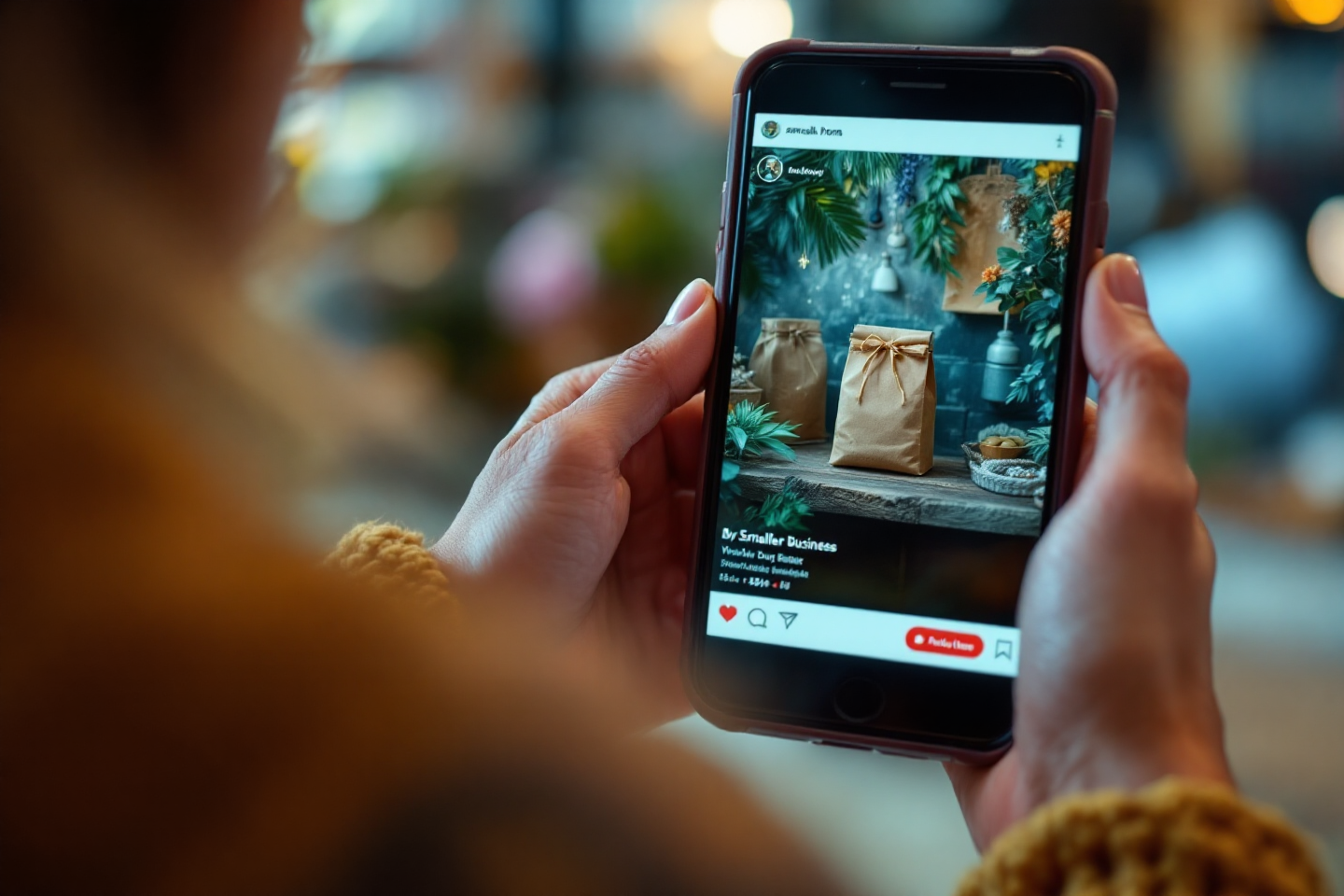
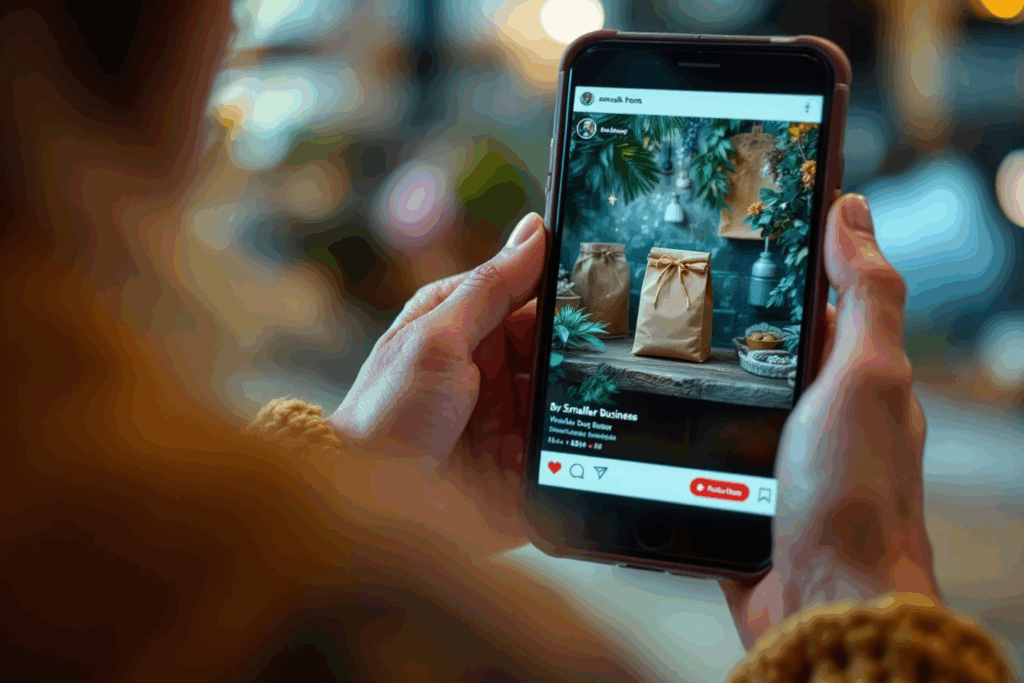
 The online world has undergone significant changes in this era of digital technology. The online marketing space is rapidly changing with social media platforms emerging as powerful conduits for engaging potential customers and driving sales. Among these platforms, Instagram stands out as a prime channel for brands looking to expand their digital footprint and directly connect with their target audience. With its visually rich format and a global with more than a billion users, Instagram has transcended its original purpose as a photo-sharing app, morphing into a vibrant marketplace where businesses, from startups to established brands, can showcase their products and services through dynamic and interactive content. Instagram has also added instagram shopping.
The online world has undergone significant changes in this era of digital technology. The online marketing space is rapidly changing with social media platforms emerging as powerful conduits for engaging potential customers and driving sales. Among these platforms, Instagram stands out as a prime channel for brands looking to expand their digital footprint and directly connect with their target audience. With its visually rich format and a global with more than a billion users, Instagram has transcended its original purpose as a photo-sharing app, morphing into a vibrant marketplace where businesses, from startups to established brands, can showcase their products and services through dynamic and interactive content. Instagram has also added instagram shopping. 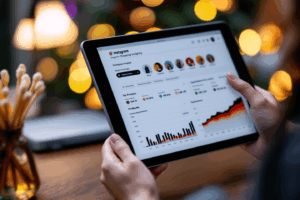 Central to Instagram’s emergence as a leading e-commerce platform are Shoppable Posts and Instagram Shopping; these innovative features that have revolutionized the way consumers discover and purchase products online. With Shoppable Posts, businesses can add product tags to their photos and videos, creating a seamless and intuitive shopping experience right within the Instagram interface. Meanwhile, Instagram Shopping extends this functionality by enabling brands to create a customizable digital storefront, making it easier than ever for users to browse and buy without ever leaving the app.
Central to Instagram’s emergence as a leading e-commerce platform are Shoppable Posts and Instagram Shopping; these innovative features that have revolutionized the way consumers discover and purchase products online. With Shoppable Posts, businesses can add product tags to their photos and videos, creating a seamless and intuitive shopping experience right within the Instagram interface. Meanwhile, Instagram Shopping extends this functionality by enabling brands to create a customizable digital storefront, making it easier than ever for users to browse and buy without ever leaving the app. Once just a place to share photos, Instagram has completely changed, becoming a major player in online shopping and reshaping how we buy things online.This evolution is a testament to Instagram’s commitment to innovation, responding to the changing needs of its users and the market dynamics. Today, Instagram Shopping stands at the forefront of social commerce, providing businesses with unprecedented opportunities to engage with their customers and drive sales directly from the platform.
Once just a place to share photos, Instagram has completely changed, becoming a major player in online shopping and reshaping how we buy things online.This evolution is a testament to Instagram’s commitment to innovation, responding to the changing needs of its users and the market dynamics. Today, Instagram Shopping stands at the forefront of social commerce, providing businesses with unprecedented opportunities to engage with their customers and drive sales directly from the platform. Instagram’s journey towards becoming an e-commerce powerhouse began with the introduction of business profiles in 2016, followed by the launch of shoppable posts in 2017. These pivotal updates opened new avenues for brands to interact with their audience, transforming passive scrolling into active shopping experiences. By enabling users to purchase products directly through posts and stories, by seamlessly blending social connection with shopping features, Instagram has fostered a unique space where cohesive ecosystem where discovery and purchase go hand in hand.
Instagram’s journey towards becoming an e-commerce powerhouse began with the introduction of business profiles in 2016, followed by the launch of shoppable posts in 2017. These pivotal updates opened new avenues for brands to interact with their audience, transforming passive scrolling into active shopping experiences. By enabling users to purchase products directly through posts and stories, by seamlessly blending social connection with shopping features, Instagram has fostered a unique space where cohesive ecosystem where discovery and purchase go hand in hand. The impact of Instagram Shopping on consumer behavior is significant, with statistics revealing a growing preference for shopping within social media platforms. According to Instagram, 70% of shopping enthusiasts turn to the platform for product discovery, and 130 million users tap on shopping posts monthly to learn more about products. This trend underscores the platform’s role in influencing shopping decisions and highlights the importance of an optimized Instagram presence for businesses aiming to capture this engaged audience.
The impact of Instagram Shopping on consumer behavior is significant, with statistics revealing a growing preference for shopping within social media platforms. According to Instagram, 70% of shopping enthusiasts turn to the platform for product discovery, and 130 million users tap on shopping posts monthly to learn more about products. This trend underscores the platform’s role in influencing shopping decisions and highlights the importance of an optimized Instagram presence for businesses aiming to capture this engaged audience.
 In the digital marketplace, the ability to capture consumer interest at the moment of discovery is crucial. Instagram’s introduction of Shoppable Posts has revolutionized the path from product discovery to purchase, making it a seamless journey that keeps users engaged within the platform. This innovative feature is at the heart of Instagram’s shopping capabilities, offering a direct, intuitive, and visually appealing shopping experience that benefits both businesses and consumers.
In the digital marketplace, the ability to capture consumer interest at the moment of discovery is crucial. Instagram’s introduction of Shoppable Posts has revolutionized the path from product discovery to purchase, making it a seamless journey that keeps users engaged within the platform. This innovative feature is at the heart of Instagram’s shopping capabilities, offering a direct, intuitive, and visually appealing shopping experience that benefits both businesses and consumers.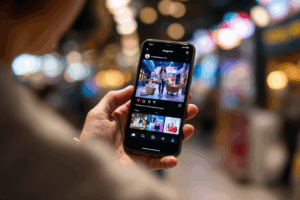 Shoppable Posts are Instagram posts that businesses can tag with products from their catalog. These tags appear on both posts and stories, allowing users to tap on a product to see more details, such as pricing and product descriptions, without ever leaving the Instagram app. A further tap takes the user directly to the business’s website or to Instagram Checkout (where available), where they can complete their purchase.
Shoppable Posts are Instagram posts that businesses can tag with products from their catalog. These tags appear on both posts and stories, allowing users to tap on a product to see more details, such as pricing and product descriptions, without ever leaving the Instagram app. A further tap takes the user directly to the business’s website or to Instagram Checkout (where available), where they can complete their purchase. Shoppable Posts have significantly altered the shopping experience on Instagram, making it a fluid journey from discovery to purchase. Users scrolling through their feeds or exploring hashtags can stumble upon products organically, marked by the distinctive shopping bag icon. This discovery process feels natural and integrated within the user’s social media experience, rather than an intrusive or disruptive ad.
Shoppable Posts have significantly altered the shopping experience on Instagram, making it a fluid journey from discovery to purchase. Users scrolling through their feeds or exploring hashtags can stumble upon products organically, marked by the distinctive shopping bag icon. This discovery process feels natural and integrated within the user’s social media experience, rather than an intrusive or disruptive ad.
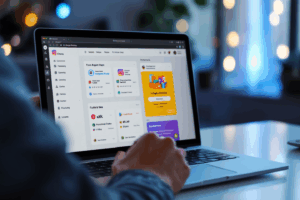
 Instagram Shop:
Instagram Shop:  Product Tags:
Product Tags: Collections:
Collections:  Shopping in Explore:
Shopping in Explore: 
 Instagram provides valuable analytics tools for businesses to track the performance of their shopping features. These insights can help you understand which products and content types are most effective, allowing for data-driven decisions to optimize your strategy.
Instagram provides valuable analytics tools for businesses to track the performance of their shopping features. These insights can help you understand which products and content types are most effective, allowing for data-driven decisions to optimize your strategy.
 The most engaging shoppable content does more than showcase a product; it tells a story. This narrative approach can significantly enhance the appeal of your offerings, making them more relatable and desirable to your audience. For instance, a lifestyle brand might use a series of posts to depict a day in the life of a person using their products, highlighting features and benefits in a natural, story-driven context. Videos, with their dynamic nature, are particularly effective for storytelling, allowing you to convey the personality and values behind your brand, alongside the practical aspects of your products.
The most engaging shoppable content does more than showcase a product; it tells a story. This narrative approach can significantly enhance the appeal of your offerings, making them more relatable and desirable to your audience. For instance, a lifestyle brand might use a series of posts to depict a day in the life of a person using their products, highlighting features and benefits in a natural, story-driven context. Videos, with their dynamic nature, are particularly effective for storytelling, allowing you to convey the personality and values behind your brand, alongside the practical aspects of your products.

 Implementing these creative strategies requires a keen understanding of your target customers or audience and a willingness to experiment with different content formats and engagement techniques. The goal is to create a rich, interactive shopping experience that goes beyond the transactional, fostering a strong connection between your brand and your customers.
Implementing these creative strategies requires a keen understanding of your target customers or audience and a willingness to experiment with different content formats and engagement techniques. The goal is to create a rich, interactive shopping experience that goes beyond the transactional, fostering a strong connection between your brand and your customers. Examples of businesses thriving with Instagram Shopping show how powerful it can be for increasing sales. These case studies not only showcase the potential of Instagram as a sales channel but also offer valuable insights and strategies that can inspire others.
Examples of businesses thriving with Instagram Shopping show how powerful it can be for increasing sales. These case studies not only showcase the potential of Instagram as a sales channel but also offer valuable insights and strategies that can inspire others. One notable success story is that of
One notable success story is that of 
 Get ready for Instagram Shopping to take off! The future holds even more ways to shop that feel like they’re built just for you, driven by advancements in AI, AR, and machine learning technologies. Upcoming features are expected to include enhanced AR try-on capabilities, allowing users to visualize products more realistically, and personalized shopping recommendations powered by AI, tailoring product discoveries to individual preferences.
Get ready for Instagram Shopping to take off! The future holds even more ways to shop that feel like they’re built just for you, driven by advancements in AI, AR, and machine learning technologies. Upcoming features are expected to include enhanced AR try-on capabilities, allowing users to visualize products more realistically, and personalized shopping recommendations powered by AI, tailoring product discoveries to individual preferences. Businesses can prepare for this future by investing in high-quality visual content and exploring AR capabilities for their products. Staying abreast of platform updates and adapting strategies to leverage new features will be crucial. Additionally, cultivating a strong community around your brand will enhance customer loyalty and engagement, positioning your business to capitalize on the evolving landscape of social e-commerce.
Businesses can prepare for this future by investing in high-quality visual content and exploring AR capabilities for their products. Staying abreast of platform updates and adapting strategies to leverage new features will be crucial. Additionally, cultivating a strong community around your brand will enhance customer loyalty and engagement, positioning your business to capitalize on the evolving landscape of social e-commerce.

